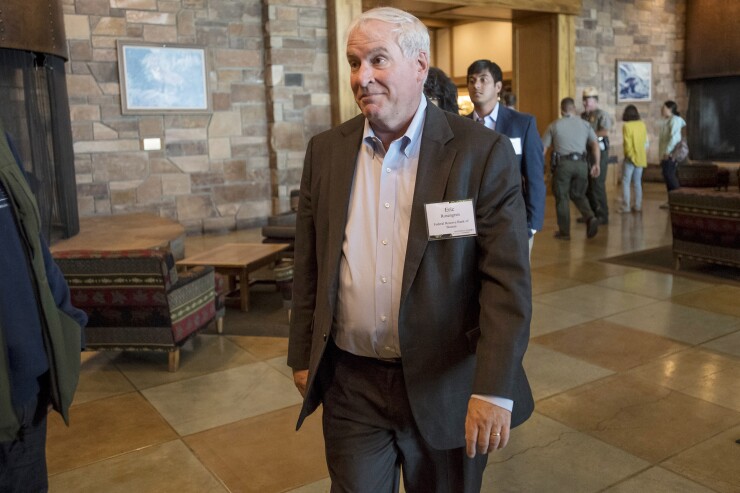Gradually raising interest rates remains appropriate, including a 25 basis point increase in December, since inflation is expected to reach the Federal Reserve’s 2% target before unemployment rises to its sustainable rate, Federal Reserve Bank of Boston President Eric Rosengren said Wednesday.
“My own view is that it is quite likely that unemployment will fall below 4%, which is likely to increase pressures on inflation and asset prices,” Rosengren, who is not a Fed voter this year, said in a speech at Northeastern University, according to prepared text released by the Fed. “In my view, that suggests the need to continue to gradually remove monetary policy accommodation, which is quite consistent with market expectations of another increase in December.”

With inflation and unemployment both below sustainable levels, Rosengren explained, the Statement on Longer-Run Goals suggests policymakers use a “balanced approach … taking into account the magnitude of the deviations and the potentially different time horizons over which employment and inflation are projected to return to levels judged consistent with its mandate.”
Currently, inflation is 1.6%, missing the Fed mark by 0.4 percentage points, while unemployment at 4.1% is 0.5 percentage points from a sustainable rate, he said, terming them “relatively similar.”
Based on projections in the Summary of Economic Projections, Rosengren notes, unemployment “remains below the Committee’s estimate of the longer-run unemployment rate of 4.6 … through 2020. … Clearly, FOMC participants expect the unemployment rate gap to be fairly persistent.”
The SEP shows the Fed expects inflation to approach 2% in 2018, “and the median forecast hits 2% in 2019. In addition, some members of the Committee expect to reach 2% in 2018 and to overshoot the target in 2020,” he said.
Although there could be “slack in the economy, most labor market indicators seem quite consistent with tight labor markets. While it is also possible that inflation dynamics are changing, globalization and technology changes do not seem as compelling an explanation for recent inflation misses as temporary idiosyncratic factors, coupled with a somewhat flatter Phillips curve. This inference is consistent with FOMC participants expecting to see a return to the 2% inflation target within the next two years. However, the unemployment rate is likely to remain below its sustainable rate for a good deal longer.”
Rosengren said he believes temporary factors are to blame for recent misses of the inflation target, not “faulty assumptions about inflation dynamics.”





